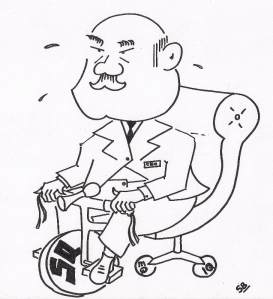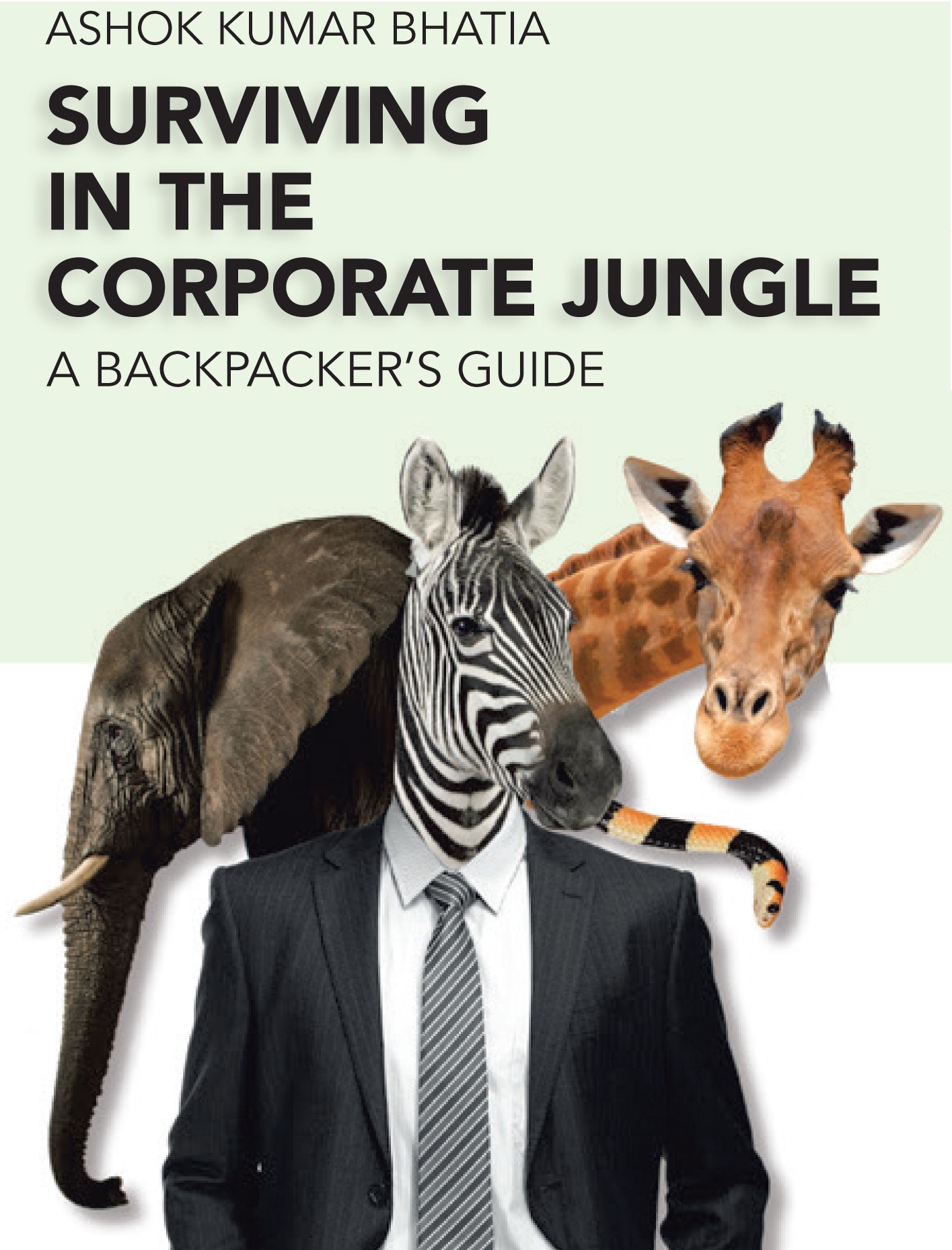CEOs lead a challenging life. Apart from making and meeting long-term business goals, they face a relentless  pressure, living from one quarter to the next. Customers have to be handled with kid gloves. Suppliers have to be kept in good humour. People have to be kept motivated at all times. Interpersonal conflicts between team members have to be sorted out. A lonely life has to be lived.
pressure, living from one quarter to the next. Customers have to be handled with kid gloves. Suppliers have to be kept in good humour. People have to be kept motivated at all times. Interpersonal conflicts between team members have to be sorted out. A lonely life has to be lived.
Unlike their juniors who invariably face Peer Pressure, CEOs face Pear Pressure. Some call it signs of prosperity. Some refer to it as a Battle of the Bulge. Others label it as flab around the waist.
The Battle of the Bulge
A CEO in possession of a portly disposition projects an image of a soul which has finally attained salvation and has become a super-hero of the species generally alluded to as managers. Walk into any gathering of the top dogs across most professions and one would be convinced that bosses are generally more portly than their bossed-over managers.
The smarter the top boss, the more he is likely to make his team members run around achieving targets. In the process, the juniors end up getting flatter tummies, a much-coveted attribute. In turn, hard-working subordinates often end up making their bosses lazier, with the latter ending up with convex-shaped protrusions in their midriffs.
Over 1.9 billion adults worldwide are overweight. Of these, some 600 million are further classified as obese. How does this come about? Lack of exercise is said to be the main culprit. Stress is yet another. Genetic factors take a part of the blame. Long working hours leading to lesser workouts get blamed.
Of decision-making and waistlines
Recently, a study by Australian universities has ended up linking decision-making to higher Body Mass Index.
According to researchers, people whose work days require constant decision-making are at greater risk of expanded waistlines. Conversely, workers who exercise control by regularly applying their skills to their jobs — known as skill discretion — were found to have lower Body Mass Index and a smaller waist size.
In other words, the researchers conclude that it is skinny people who are most often good at what they do and enjoy using their skills. However, those who have the power to make decisions are distinctly wider around the middle.
This justifies the derisive term Fat Cats often used to refer to those who control the levers of business. Admittedly, larger waistlines are perhaps a consequence of the CEOs’ sedentary job requirements instead of being the reason for their elevation to decision-making levels.
Perhaps further studies may reveal that weighty decisions need personal countervailing ballast in order to be balanced. It sounds as if power ends up making business leaders more expansive.
Beyond the Peter Principle
Concerned CEOs may wish further research to be designed in such a way as to establish the veracity of some  principles of the following kind:
principles of the following kind:
1. A manager’s waistline is directly proportional to his position in any decision-making hierarchy.
2. According to the Peter Principle, in any organization, employees rise to their level of incompetence. Further studies could confirm if their rise is also linked to the propensity of their bodies to achieve the maximum girth permitted by their constitution.
3. Depending upon their Body Mass Index and the waistline, successful CEOs could be classified into three categories.
Potato CEOs: Those who have dazzled with their performance in the good old days. They have outgrown the stage of feeling Pear Pressure.
Pear CEOs: Those who are currently guiding teams and delivering reasonably good results. The hapless souls are yet to come to terms with their pear-shaped midriffs.
Banana CEOs: Those who are good at planning as well as execution. They aspire to attain the status of Peer CEOs, without their bariatric blues.
4. For Potato CEOs, Pear CEOs are objects of envy. Likewise, Pear CEOs, howsoever reassured they might sound, secretly aspire to be like Banana CEOs, with concave-shaped bellies.
5. A hypothesis that can be put to test would be if the rate of rise in a hierarchy determines the rate of increase in waistlines.
6. All these propositions need to be cross-validated across different cultures and societies.
Such studies would enrich the science of Hierarchiology. These would be highly useful for head hunters as well as for Human Resource professionals. The insights gained thus would enable managers of all sizes and shapes to improve their quality of life.
Pear Pressure in organizations
Ironically, what is true of individual CEOs is also true of organizations.
The very successful and dynamic ones indulge in frequent bariatric surgeries and ensure that their midriffs remain under strict control. They are acutely aware of Pear Pressure and have checks and balances in place to avoid carrying excessive flab.
under strict control. They are acutely aware of Pear Pressure and have checks and balances in place to avoid carrying excessive flab.
The mediocre ones end up accumulating flab in the middle. At every success, they end up hiring more people than is necessary. At every failure, they undergo a liposuction procedure. They have learnt the art of managing Pear Pressure.
The not-so-successful organizations have the highest Body Mass Index. They are replete with massive layers in their hierarchies. Their processes are bogged down with archaic procedures. Most public sector undertakings are shining examples of this kind.
This is THE challenge all CEOs need to fight single-handedly. They have to wage a relentless war on adipose tissue of all kinds. Unless they decide to take the matter in their own hands, literally as well as metaphorically, the excess belly fat – whether on their own personas or in their organizations – would refuse to melt away.
(Reference: http://www.theweek.in/news/sci-tech/how-your-job-could-be-influencing-your-waistline-study.html)
Read Full Post »
 pressure, living from one quarter to the next. Customers have to be handled with kid gloves. Suppliers have to be kept in good humour. People have to be kept motivated at all times. Interpersonal conflicts between team members have to be sorted out. A lonely life has to be lived.
pressure, living from one quarter to the next. Customers have to be handled with kid gloves. Suppliers have to be kept in good humour. People have to be kept motivated at all times. Interpersonal conflicts between team members have to be sorted out. A lonely life has to be lived.










